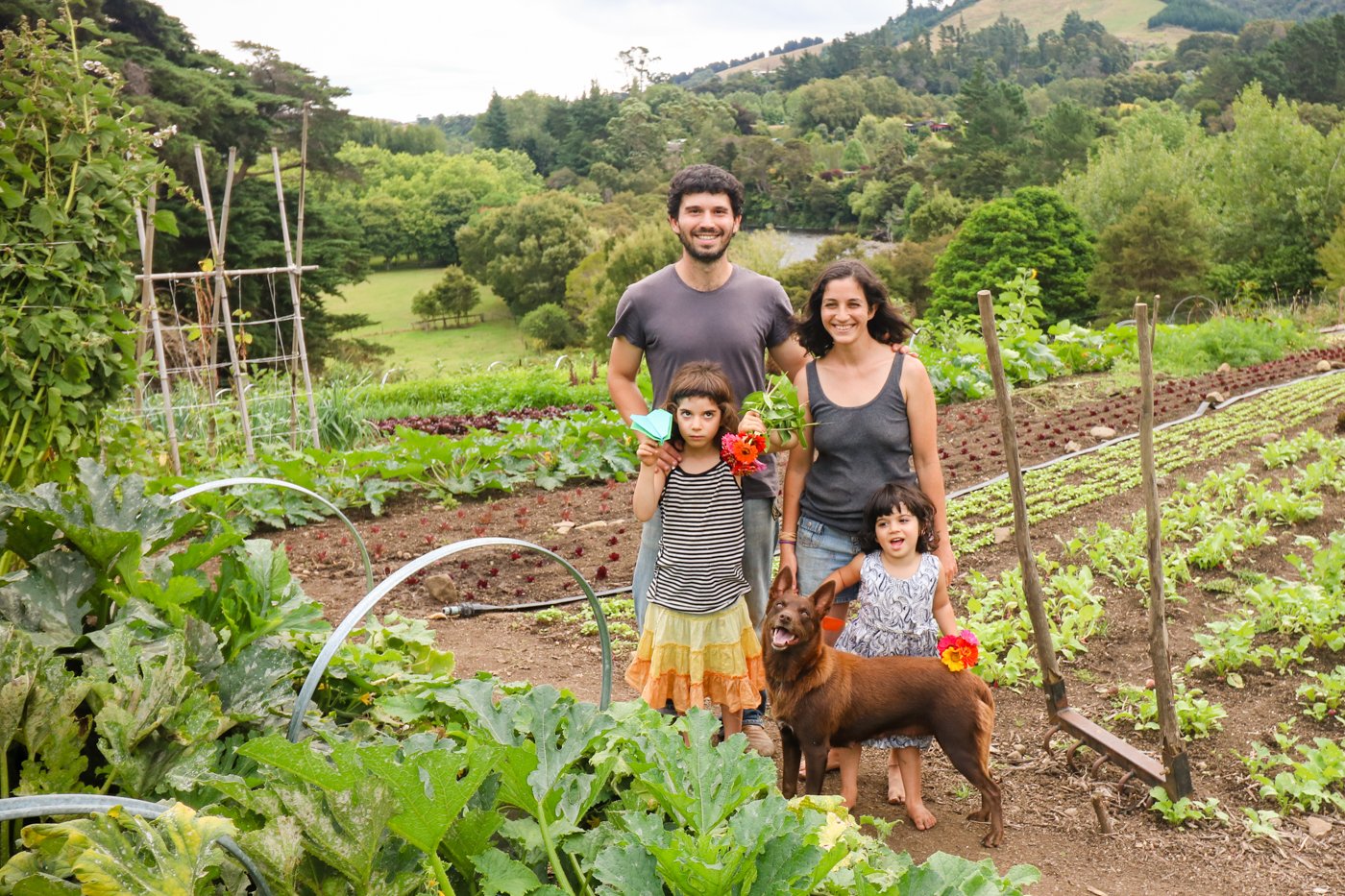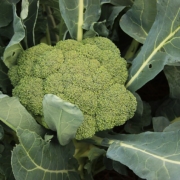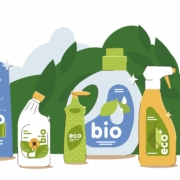GE in NZ: Trials and errors
Claire Bleakley provides an overview of the main field trials of genetically engineered animals and plants in New Zealand over the past two decades, with a focus on the recent acceleration of GE animal experimentation
We hope you enjoy this free article from OrganicNZ. Join us for access to exclusive members-only content.
What a beautiful country we live in, promoted as clean, green and 100% pure. We have innovation, expertise and wild places. Our country has great potential to become an organic nation providing New Zealanders and the world with safe, healthy GE-free foods.
The government budget in May ignored the immense contribution that organics is giving the nation, but increased the funding to GE sector. Why?
Background
As early as 1988 GE field trials were carried out by Lincoln University and the Department of Scientific and Industrial Research (DSIR) on broccoli, goats, sheep, and potatoes in the Lincoln region. These trials were approved by the Interim Assessment Group (IAG), which assessed GE organisms prior to the Hazardous Substances and New Organisms (HSNO) Act being passed in 1996.
The HSNO Act is administered by the Environmental Risk Management Authority (ERMA). Anyone who wants to introduce new organisms (non-GE and GE) in New Zealand has to apply to ERMA for approval.
After the 1992 outbreak of BSE in Britain, biotech company PPL relocated to New Zealand to create sheep engineered with a human gene for cystic fibrosis (hAAT). Environment Minister Simon Upton at first turned down the request, as New Zealand then had no laws around GE technology.
In 1994 PPL set up a flock of sheep under IAG approval in Whakamaru. Up to 10,000 conventional ewes were mated with GE rams in order to produce human alpha-1 antitrypsin (hAAT) protein for cystic fibrosis sufferers in the milk of their progeny. The sheep were East Friesians, chosen for their high milk and lambing percentage. But lambing rates were low (6%) and the GE sheep were susceptible to disease and arthritis.
Bayer conducted clinical trials on humans using PPL’s hAAT protein. These were stopped six months into the trials because of immune system and respiratory problems experienced by the participants, and this bankrupted PPL. The 3000 GE sheep were incinerated and buried in the paddock.
The government-owned Crown Research Institutes (CRIs) have approvals for thousands of indoor laboratory experiments to create GE animals and plants. AgResearch joined the outdoor ‘biotechnology revolution’ at their Ruakura site on 200 acres in 2000. Across its many campuses, AgResearch has approval to genetically engineer a wide range of forage legumes, grasses and vegetable plants in laboratory containment and glasshouses. The reason that these are not being trialled in the field is that ‘the climate in New Zealand is not favourable’ to outdoor experiments and they are waiting for a change in opposition to outdoor GE trials.
Past field trials
In 2001 a HortResearch trial in Kerikeri on tamarillos genetically engineered to be resistant to mosaic virus ended. GE-Free Northland raised concerns to the Royal Commission on Genetic Modification about the persistence of GE DNA in soil biota, and as a result the Commission recommended post-trial monitoring.
In 2003 Scion (previously the Forest Research Institute) gained approval to field trial GE pine and spruce trees carrying reproductive-altering and herbicide-resistant traits. Breaches in facility maintenance were publicised by Soil & Health spokesman Steffan Browning in the media, including Organic NZ. This led to a person or persons entering the facility and cutting down 19 trees. The trial ended in 2008 but gained further approval in 2009. Another new application for 4000 GE pine trees is being sought by Scion.
In 2004, Crop and Food with partner Seminis (a subsidiary of Monsanto) gained approval for a GE onion field trial at Lincoln. The trials did not perform as expected as the GE onions were infested with thrips and the bulbs did not store well, and the trial ended early. A 2006 application for garlic, onions, leeks and other alliums is on hold.
Crop and Food (now part of Plant and Food) received approval in 2007 to trial GE brassicas (cauliflower, broccoli, cabbage, kale) that would produce an insecticide (Cry) gene. This trial, conducted at a secret location in Lincoln, breached regulatory controls after only four months, and in 2008 a flowering plant was discovered from unchecked regrowth and publicised by Steffan Browning. The breach was so serious that Plant and Food and MAF-Biosecurity NZ closed down the trial site. There are no field trials running in the area at the moment.
Failure of GE worldwide
Over the last decade international research results have documented a rise in weed resistance, insect tolerance, and failure of GE crop yields leading to farmer suicides. Animal GE feeding studies are showing adverse effects on kidneys, liver, heart and blood, changes to the immune system, with death and sterility being common. This poses a serious safety warning for us and future generations. There are still no diagnostic tools for GE adverse events that health professionals can carry out.
GE animal suffering
The New Zealand Government, through AgResearch, has relentlessly pursued GE animal production and entered into partnership deals with overseas companies (Genzyme Transgenic Corporation and Pharming NV) to produce a wide range of GE products. These partnerships were signed amid controversy over the high level of animal suffering and deformities that the technology creates.
Dolly the sheep (a clone) had arthritis and died of lung cancer at six years old. AgResearch’s GE animals have a poor pregnancy to term rate (0–8%) and the calves and cows suffer both congenital and intergenerational abnormalities. For example, in the first-year (2007) cows carrying embryos engineered with a follicle stimulating hormone (FSH) gene all aborted. Transgenic cells were harvested from aborted foetuses, and from approximately 200 embryo transfers there were only four calves born carrying the FSH gene. At six months, three calves were dead, two from uterine artery hemorrhage and ovarian rupture, and one was euthanased.1 1 Autopsies revealed abnormal enlargement (hyper-stimulation) of the ovaries. The survivor has bone growth abnormalities.
Over the past decade, hundreds of GE animal embryo transfers have been made.
GE animals anywhere, any time, forever?
Last year GE Free NZ successfully challenged in the High Court a large, four-stage application by AgResearch for GE animal trials, but this was overturned on appeal. The extreme application basically seeks to be able to run GE trials on animals anywhere, any time, and if it’s approved AgResearch would never need to reapply for an approval for GE animals again. The application is now postponed until August after ERMA staff recommended that it be declined, and is at the Supreme Court for leave to be heard.
In November 2009, ERMA approved an indoor development of sheep, goats, cattle, pigs, cats, dogs, rabbits, chickens and guinea pigs, all extremely similar to the illegal application. In March this year, approval was given to allow the GE outdoor development of cattle, sheep and goats. These applications have been further challenged in the High Court by GE Free NZ.
The next onslaught of GE field trials planned is a vast range of fodder crops and grasses, and GE ryegrass is on the field test horizon. We already have traditionally-bred grass cultivars that are producing excellent results and contain many of the same qualities for high sugar and drought resistance that are hoped for from genetic engineering.
Drop GE, focus on ethics, biodiversity and organics
We cannot allow animal suffering to be perpetuated further, especially when the potential products are already being created in safer and less risky conditions of vat fermentation, for example – insulin.
It is arrogant and stupid to presume that we can create one grass type to outperform and provide all nutritional needs for our stock. Reliance on one type of fodder, such as GE ryegrass, will cause serious nutritional depletion and increased susceptibility to diseases. Fodder diversity and traditional herbal leys are essential to good farming.
At the moment New Zealanders are under extreme pressure to drop their GE-free brand. This means giving away the quality and safety we currently have in our food and environment. We must remember our brand and our country are special and coveted. We can still make New Zealand organic by 2020 if we resist the pressure and focus on what we have always done best: safe, high quality food, grass-fed farming, selective breeding and build on our renowned organic sector that is growing exponentially.
Thanks to Steffan Browning and to Susie Lees for their input into this article.
Deformities in AgResearch’s GE calves
Internal organ problems
- Uninflated lungs
- Lack of diaphragm
- No bladder
- Congenital heart abnormalities
- Bladder and pericardia fused
- Excessive abdominal fluid
- Ovarian and uterine deformities
- Squamous cell carcinoma
- Endocrine disruption
Deformities in limbs
- Clubfoot and fused neck
- Rear fetlocks bent back
- Severe contraction of tendons
- Early fusion of bone growth plates
Source: AgResearch Annual Report 2000–09
Status of AgResearch GE programme at Ruakura
| Application code | GE organism / therapeutic protein | Application status as at 2009; notes |
| 1. GMF980092 Approved 1999 for 5 yrs (Nov 1999–2004) Approved May 2001–2006 | Outdoor field trial (200 acres) of cattle genetically engineered with the following proteins. | March 2010: ERMA extended application without public input |
| (1) Casein plus (+) extra casein protein gene added. | 63 cows | |
| (2) Beta lactoglobulin minus (BLG-) | No viable GE embryo created No animals exist | |
| (3) Myelin basic protein (MBP) – protein for multiple sclerosis | 4 cows | |
| 3. GMD020283 Approved 2002 for 7.5 years. 2002–2009 | Outdoor field trial of GE cattle using human genes | As per GMF98009 above |
| (1) Lactoferrin (from human breast milk) | 23 cows | |
| (2) Follicle stimulating hormone (FSH) – fertility hormone. | 1 cow remaining (2 sudden deaths from ruptured ovaries and 1 euthanased) | |
| 4. GMC070124 GMD07074 GMF07001 GMD08012 under consideration | For GE animals, to import develop, indoor/outdoor field test with a range of genetic engineering techniques for research, breeding and production of potential commercial products. Anywhere, any time, forever. | AgResearch has withdrawn the applications until August to consult with stakeholders to consider options. ERMA NZ Evaluation and Review report recommended the applications be declined. |
| 5. ERMA2002235 Approved 13 April 2010 for 20 years. (2010–2030) | Outdoor containment to create GE goats, sheep and cattle with human therapeutic proteins, or with altered protein levels. | Approved, but not in operation yet. AgResearch is discussing with MAF which cattle will be held under this approval. |
| 6. GMD 090116 Ruakura and Palmerston North Approved 25 Nov 2009 | Indoor containment of GE cats, dogs, sheep, goats, pigs, chickens, cattle, possums, guinea pigs, rabbits, rats, mice, human cell lines, E-coli. | GE Free NZ applied for a reassessment of this trial but was turned down. Laboratory work unlimited and forever. |
| 7. GMD 090177 13 April 2009 –forever | GE plants in indoor containment Brassica spp. Broccoli, cabbage cauliflower, forage kale, oilseed rape, swede, mustard, turnip, Chinese mustard, cabbage, Thale cress Grasses Tall fescue, ryegrass, darnell, couch, bentgrass, blue grass Barley Wheat: bread, durum Oils Safflower, sunflower Soy bean, sesame Solanum tomato, potato tobacco Legume garden pea, birdsfoot trefoil, lotus, lupin, alfalfa, Clover: red, white, Kenyan, western, rabbits-foot Broom Flowers Petunia | Trials for plant development, metabolic processes, symbiotic relationships and pathogen interactions for the development of novel gene delivery systems and plant-based biotechnologies. GE ryegrass field trial signalled for 2013. |
GM or GE?
The terms GE (genetically engineered) and GM (genetically modified) are often used interchangeably but this is confusing as all GE crops are GM, but not all GM crops are GE.
Genetic modification (GM)
GM the alteration of an organism’s genes made through traditional or hybrid breeding, mutagenesis or genetic engineering. Yeasts and yoghurt are often used as an example of the thousands of years humans have been using GM.
Genetic engineering (GE)
GE (or recombinant DNA technology), including transgenics and cisgenics, is the creation of a synthetic gene from related and/or unrelated organisms through splicing together bacterial, viral, animal or plant genes.
Techniques of genetic engineering include, but are not limited to: recombinant DNA, cell fusion, micro and macro injection, encapsulation, gene deletion, and doubling.
GE Free NZ
GE Free NZ is a not-for-profit organisation. We have been successful in raising the awareness of the risks that genetic engineering brings to our economy, health and environment. Please support us by becoming a member or donating towards our legal expenses.
Go to http://www.gefree.org.nz to join us and see our press releases and past actions, and join us on the GE Free NZ in Food and Environment Facebook page.
References
- ‘Mutant cows die in GM trial’ www.nzherald.co.nz/nz/news/article.cfm?c_id=1&objectid=10642031; AgResearch Annual Report to ERMA New Zealand, 31 December 2009
- www.ermanz.govt.nz/Find/WebResults.aspx?Search=GMF98009
- www.ermanz.govt.nz/Find/WebResults.aspx?Search=GMD02028
- www.ermanz.govt.nz/find/WebResults.aspx?search=erma200417
- www.ermanz.govt.nz/Find/WebResults.aspx?Search=ERMA200223
- www.ermanz.govt.nz/Find/WebResults.aspx?Search=GMD09011
- www.ermanz.govt.nz/Find/WebResults.aspx?Search=GMD09017
Claire Bleakley is president of GE Free NZ (in food and environment).








